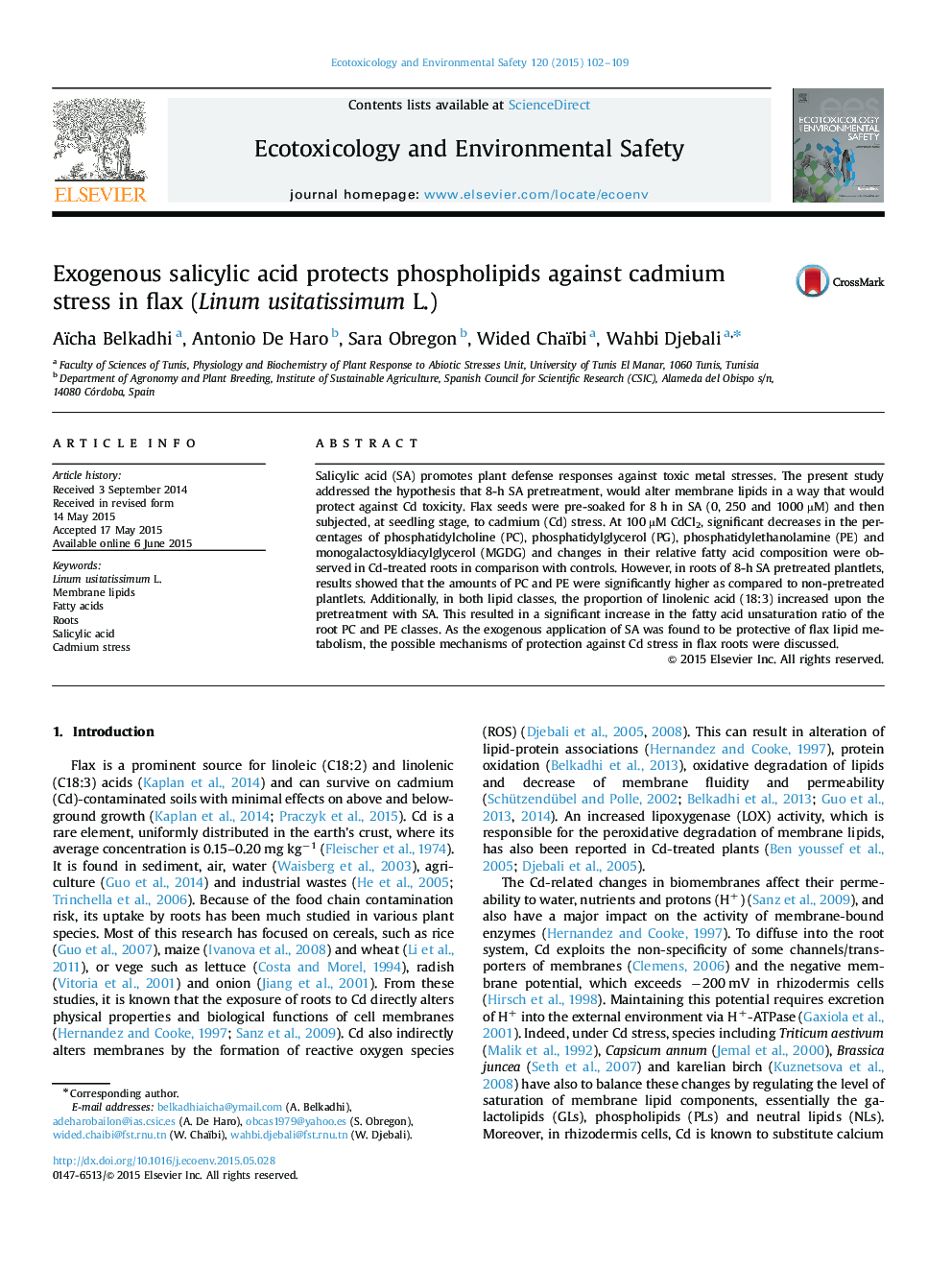| Article ID | Journal | Published Year | Pages | File Type |
|---|---|---|---|---|
| 4419410 | Ecotoxicology and Environmental Safety | 2015 | 8 Pages |
•SA pretreatment increases the amounts of PC and PE in Cd-treated plant roots.•SA pretreatment increases the fatty acid unsaturation of the root PC and PE.•Exogenous SA application induces protection against root lipid alteration under Cd stress.
Salicylic acid (SA) promotes plant defense responses against toxic metal stresses. The present study addressed the hypothesis that 8-h SA pretreatment, would alter membrane lipids in a way that would protect against Cd toxicity. Flax seeds were pre-soaked for 8 h in SA (0, 250 and 1000 µM) and then subjected, at seedling stage, to cadmium (Cd) stress. At 100 µM CdCl2, significant decreases in the percentages of phosphatidylcholine (PC), phosphatidylglycerol (PG), phosphatidylethanolamine (PE) and monogalactosyldiacylglycerol (MGDG) and changes in their relative fatty acid composition were observed in Cd-treated roots in comparison with controls. However, in roots of 8-h SA pretreated plantlets, results showed that the amounts of PC and PE were significantly higher as compared to non-pretreated plantlets. Additionally, in both lipid classes, the proportion of linolenic acid (18:3) increased upon the pretreatment with SA. This resulted in a significant increase in the fatty acid unsaturation ratio of the root PC and PE classes. As the exogenous application of SA was found to be protective of flax lipid metabolism, the possible mechanisms of protection against Cd stress in flax roots were discussed.
